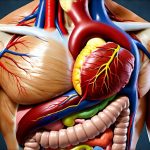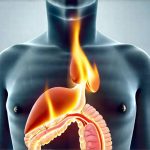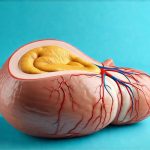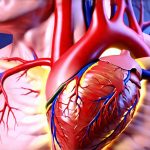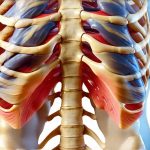Acid reflux and nausea are two incredibly common digestive complaints, often experienced separately but frequently intertwined in a frustrating cycle for many individuals. Understanding the relationship between these conditions is crucial not only for alleviating symptoms but also for identifying potential underlying issues that may require attention. While heartburn – the burning sensation in the chest typically associated with acid reflux – is often seen as the primary symptom, nausea can be a significant and debilitating accompanying experience, sometimes even preceding the familiar burn. This complex interplay isn’t always straightforward; it’s influenced by individual physiology, dietary habits, stress levels, and other health conditions. Many people assume that nausea simply results from the discomfort of acid rising into the esophagus, but the connection is often far more nuanced.
The digestive system is a remarkably sensitive network, and disruptions in one area can quickly cascade to others. Nausea isn’t merely a reaction to acidity; it’s an intricate protective mechanism triggered by various signals sent from the gut to the brain. When acid reflux occurs frequently or severely, these signals become amplified, leading to feelings of queasiness, discomfort, and even vomiting in some cases. Exploring this relationship requires delving into the mechanisms of both conditions, identifying common triggers, and understanding how lifestyle modifications and medical interventions can help break the cycle between acid reflux and nausea. Ultimately, recognizing the often-overlooked connection between these two symptoms is vital for improving overall digestive health and quality of life.
The Physiology Behind Acid Reflux and Nausea
Acid reflux occurs when stomach acid flows back up into the esophagus—the muscular tube connecting your mouth to your stomach. This happens because the lower esophageal sphincter (LES), a ring of muscle at the bottom of the esophagus, doesn’t close properly. Normally, this sphincter opens to allow food to pass into the stomach and then closes to prevent acid from escaping. When it malfunctions, or relaxes inappropriately, acidic contents can irritate the sensitive lining of the esophagus, causing heartburn and potentially leading to nausea. It’s important to remember that the LES isn’t the only factor; hiatal hernias – where part of the stomach protrudes through the diaphragm – can also contribute to reflux by weakening the LES.
Nausea, on the other hand, is a complex physiological response orchestrated by the brainstem’s vomiting center. This center receives signals from various sources: the digestive tract (including the esophagus and stomach), the inner ear (which detects motion sickness), and even the brain itself in response to smells or thoughts. When these signals indicate something isn’t right—like acidity irritating the esophagus, or a disrupted gastrointestinal system—the vomiting center initiates nausea as a protective mechanism to rid the body of potentially harmful substances. It’s not always about vomiting; nausea is often a warning signal that things are amiss.
The connection arises because frequent acid reflux can chronically irritate the vagus nerve, a major nerve connecting the brain and gut. This irritation sends continuous signals to the vomiting center, making individuals more susceptible to nausea even with relatively mild reflux episodes. Furthermore, some medications used to treat acid reflux – while effective at reducing acidity – can have side effects that contribute to nausea in certain individuals. It’s this intricate feedback loop between the digestive system and the brain that creates a challenging situation for those experiencing both conditions simultaneously. Understanding the connection between gut-brain connection https://vitagastro.com/acid-reflux-and-anxiety-the-gut-brain-connection/ can help patients understand their symptoms better.
Common Triggers and Contributing Factors
Many factors can trigger or exacerbate both acid reflux and nausea, often overlapping and compounding each other. Diet is a significant contributor; certain foods are known to relax the LES, increasing the likelihood of reflux. These include:
– Fatty foods
– Chocolate
– Mint
– Spicy foods
– Caffeine
– Alcohol
These same dietary culprits can also directly irritate the stomach lining, potentially triggering nausea. Beyond food choices, eating habits play a role. Large meals, eating quickly, and lying down immediately after eating all increase the risk of reflux by putting pressure on the LES. Lifestyle factors like smoking and obesity are also strongly linked to both conditions because they weaken the LES and increase abdominal pressure.
Stress and anxiety can significantly worsen both acid reflux and nausea. When stressed, the body releases hormones that affect digestion, potentially leading to increased stomach acid production and disrupted esophageal sphincter function. This creates a vicious cycle where stress causes reflux, which then triggers nausea, further increasing stress levels. Underlying medical conditions like gastroparesis (delayed stomach emptying) can also contribute; if food remains in the stomach for too long, it increases the likelihood of reflux and can directly induce nausea due to distension and fermentation. Identifying these individual triggers is a crucial step towards managing both symptoms effectively. It’s important to understand the relationship between acid reflux and bloating https://vitagastro.com/the-relationship-between-acid-reflux-and-bloating/ as these two often occur together.
Diagnosing the Connection: When to Seek Medical Advice
It’s important to differentiate between occasional acid reflux and chronic acid reflux accompanied by frequent nausea. Occasional heartburn, experienced after a particularly rich meal, may not require medical attention. However, if you experience persistent heartburn (more than twice a week), or if nausea is severe, interferes with your daily activities, or is accompanied by other symptoms like difficulty swallowing, chest pain, vomiting, or unintentional weight loss, it’s essential to consult a healthcare professional.
A doctor can perform various tests to determine the underlying cause of your symptoms. These may include:
1. Endoscopy: A procedure where a thin, flexible tube with a camera is inserted into the esophagus and stomach to visualize any inflammation or damage.
2. Esophageal manometry: Measures the pressure within the esophagus to assess LES function.
3. pH monitoring: Tracks the amount of acid in the esophagus over a 24-hour period to identify reflux episodes.
These tests help determine whether your nausea is directly related to acid reflux, or if there’s another underlying condition contributing to it—such as a stomach ulcer, gallbladder disease, or medication side effects. Self-diagnosis can be misleading and potentially delay appropriate treatment. A proper diagnosis ensures you receive the most effective care tailored to your specific needs. The importance of liver health https://vitagastro.com/understanding-the-connection-between-liver-health-and-immunity/ shouldn’t be overlooked, as it plays a role in overall digestive function.
Lifestyle Modifications for Relief
Fortunately, many lifestyle modifications can significantly reduce both acid reflux and nausea. These strategies focus on minimizing triggers, optimizing digestion, and reducing stress. Some effective approaches include:
– Dietary adjustments: Avoiding trigger foods, eating smaller, more frequent meals, and chewing food thoroughly.
– Elevating the head of your bed: This can help prevent acid from flowing back up into the esophagus while you sleep. Use blocks or a wedge pillow to raise the head end 6–8 inches.
– Maintaining a healthy weight: Obesity increases abdominal pressure, contributing to reflux and nausea.
– Quitting smoking: Smoking weakens the LES and irritates the digestive tract.
Stress management techniques are also crucial. Practices like yoga, meditation, deep breathing exercises, and regular physical activity can help reduce stress levels and improve overall well-being. Consider keeping a food diary to identify specific foods that trigger your symptoms and adjust your diet accordingly. Simple changes in daily habits can make a substantial difference in managing both acid reflux and nausea. Recognizing the link between liver health and mood https://vitagastro.com/understanding-the-connection-between-liver-health-and-mood/ can help manage stress, a key factor in both conditions.
Medical Interventions and Treatment Options
When lifestyle modifications aren’t sufficient, medical interventions may be necessary to manage acid reflux and associated nausea. Over-the-counter medications like antacids can provide temporary relief by neutralizing stomach acid. H2 blockers reduce acid production, while proton pump inhibitors (PPIs) are more powerful and suppress acid secretion for longer periods. However, long-term use of PPIs should be discussed with a doctor due to potential side effects.
For nausea, antiemetic medications can help suppress the vomiting reflex. These are typically prescribed by a doctor based on the severity of your symptoms. In some cases, addressing underlying medical conditions like gastroparesis may be necessary. If acid reflux is severe and unresponsive to medication, surgery to strengthen the LES or prevent hiatal hernia might be considered as a last resort. It’s essential to work closely with your healthcare provider to determine the most appropriate treatment plan based on your individual needs and medical history. Remember that managing both conditions effectively often requires a multi-faceted approach combining lifestyle changes, medications, and ongoing monitoring. Understanding pancreas and liver https://vitagastro.com/understanding-the-connection-between-pancreas-and-liver/ function is also important for holistic digestive health. Additionally, the relationship between gas and acid reflux https://vitagastro.com/the-relationship-between-gas-and-acid-reflux-explained/ can contribute to both symptoms, making it vital to address digestive health comprehensively. Finally, understanding liver and hormones https://vitagastro.com/understanding-the-connection-between-liver-and-hormones/ can help explain how these conditions are interconnected.




